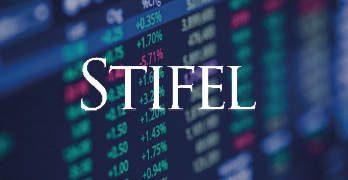Hungry, Hungry Hippos: Largest Retailers Gobbling Up Air Cargo Capacity in Anticipation of Strong Consumer Peak

Average Asia outbound airfreight rates are on a pronounced sequential upswing heading into peak season. And, according to BAI data, that upswing is happening earlier this year - and off of a higher base. Hong Kong to Europe (BAI31) and North America (BAI32) were up 66% and 85% year-over-year, respectively, with both indices rising 21% and 13% since August, which is when the inflection began. Out of Shanghai Pudong, the numbers are even starker. In September, the PVG to Europe Basket (BAI81) rose 73% year-over-year and 38% since this August. The PVG to North America Basket (BAI82) climbed an astonishing 116% versus September 2020 and 40% since last month. Absolute rates on Shanghai to North America are now within spitting distance of the absolute peak in 2Q20 when the PPE surge drove air cargo rates to historical highs.
The reason for the earlier upswing, in our view, is that retailers were caught off guard for last year’s peak by strong demand and scarce capacity. This year, many are preparing earlier for the Holidays, while trying to navigate severe and persistent supply chain disruption. Walmart, for example, has professed to building as much inventory as it can at the end of the third quarter. We believe that part of that strategy involves leaning on suppliers to produce and provide the goods, but also working to secure as much transportation capacity as possible by leveraging scale, creativity, and pure dollars. The company has been buying containers, expanding its network of providers, and even chartering ships. Other retailers have been taking similar measures…especially those with deep pockets, in our view.
Stifel’s proprietary surveys show that spending intentions are indicating higher than they did 12, 18, and even 24 months ago. Part of that strength is stimulus driven, in our view. But we think there are fundamental factors at play too.
Looking into the source of the demand, the Consumer remains quite healthy, especially in the U.S. Stifel’s proprietary surveys show that spending intentions are indicating higher than they did 12, 18, and even 24 months ago. Part of that strength is stimulus driven, in our view. But we think there are fundamental factors at play too. Wages remain a significant global pressure point, with tight labor supply across many facets of the economy, including for lower wage workers. Resultant pay increases are buoying incremental consumer spending power and elevating those purchase intent numbers. And, while there has been concern over a goods-to-service rotation in consumer discretionary dollars (we have always been in the camp of “it’s not as bad as people think”), much of that concern has at least been pushed out due to the Delta variant.
Meanwhile, big changes are afoot in the world of e-commerce. We suspect these changes are consuming more capacity across the supply chain. The e-commerce phenomenon is not new, of course, but the way consumers are buying online is. We believe these trends have accelerated meaningfully through the pandemic. Namely, the rise of various permutations of same-day fulfillment and delivery has shifted supply chain and inventory patterns. Third-party shoppers, buy-online-pickup-in-store (BOPIS), and curbside delivery have increased the need for fulfill from store and are altering already new omni-channel supply chains from before the pandemic.
Again, because of persistent COVID concerns, international passenger travel remains subdued, and with it, global belly capacity. We think that the longer this “work from home Zoom culture” stays with us, the more likely it is to stick. So, global passenger belly space may not return to full steam for quite a while.
So, demand fundamentals are strong, and should be for at least another few quarters. But supply issues aren’t getting much better. Again, because of persistent COVID concerns, international passenger travel remains subdued, and with it, global belly capacity. We think that the longer this “work from home Zoom culture” stays with us, the more likely it is to stick. So, global passenger belly space may not return to full steam for quite a while. The industry can, and has been, responding: freighter conversion lines are maxed out, for example, but the process will take time. Yet creative capacity bandages like “pfreighters” are maybe less likely this time around. Fuel costs have increased, which has put pressure on operating costs and shrunk operator margins versus 2Q20 (which is not to say that those margins aren’t still robust, just that this market is not as compelling, even though absolute air cargo dollars per kilo are converging with the last rate peak). At the same time, ocean freight remains mired in backlog and delay. According to Project44 data, schedule reliability continues to degrade, even as container rates continue to rise. And the number of ships waiting for berth on the U.S. West Coast also continues to reach new peaks. This means that for desperate shippers, air cargo may continue to be a pressure relief valve for desperation restocking, if it can be called “relief”, and prices should remain elevated through the end of the year.
About Bruce Chan, Director & Senior Analyst, Global Logistics & Future Mobility Equity Research, Stifel
Bruce Chan joined Stifel in 2010 and is based out of the Miami office.
Bruce Chan can be reached at chanb@stifel.com. Opinions expressed are subject to change without notice and do not take into account the particular investment objectives, financial situation or needs of individual investors. For more information and current disclosures for the companies discussed herein, please go to the research page at www.stifel.com.
©2021 by J. Bruce Chan.